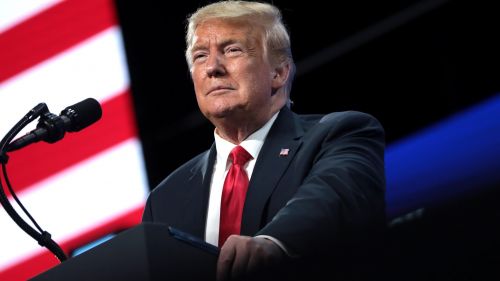This Week's Read: Will Trump Withdraw from NATO?

Ivo Daalder discusses President Trump's intent to withdraw the United States from NATO.
On a recent trip to Europe, people kept coming back to me with one question: Will the United States really withdraw from NATO this year? As a former US Ambassador to NATO, the question was as shocking to me as it was to those who asked it.
The questions followed a news report that during 2018 President Trump had repeatedly told aides he wanted to withdraw from NATO. These advisers had been able to dissuade him from acting on his desires. But now they are gone.
John Kelly left the White House in December. Jim Mattis resigned, citing in part his failure to convince the president of his “core belief” that “our strength as a nation is inextricably linked to the strength of our unique and comprehensive system of alliances and partnerships.” Since then the top officials responsible for NATO and Europe in the Defense and State Departments announced they were departing as well.
The rumors and resignations were deeply disquieting to America’s European allies, all of whom believed that strong ties across the Atlantic were absolutely vital to their security, prosperity, and freedom. Thus, the question: Will Trump really pull the US out of NATO?
My honest answer was that I didn’t know. Trump’s instinct would be to act on his desire to withdraw. He has long castigated NATO as “obsolete.” As long as thirty years ago, he’d called on allies to pay the United States “hundreds of billions of dollars” for defending them. As president, he failed for months to endorse Article 5, the fundamental NATO commitment to come to an ally’s defense if attacked. And he had gone twice to Brussels, not to celebrate the strength of the Alliance, but to disparage allies for not doing enough.
All of this suggested not only that the news report was accurate, but that 2019 might well be the year Trump would make good on the threat, made at last year’s NATO Summit, for the US to “go its own way.”
But while there is reason to worry, there are also reasons to believe the threat will remain just that. The American public is very supportive of NATO, with three-quarters of the public saying that the US commitment to NATO should remain the same or be increased. And more than 50 percent of Americans would support the use of US troops to defend NATO allies like the Baltic states if they were attacked.
That public sentiment is matched on Capitol Hill. Earlier this week, the House voted 357-22 to express support for NATO and to prevent the use of any funds by the president to withdraw from NATO. A similar bipartisan bill is awaiting a Senate vote and, if passed by a similarly veto-proof margin, that would make it difficult for Trump actually to withdraw from NATO.
As important, the US military commitment to NATO not only remains strong, but continues to grow. The well-funded European Deterrence Initiative provides for a rotating presence of a US combat brigade in Eastern Europe, a continuing presence of US troops in Poland and the Baltic States, as well as a growing Marine presence in northern Norway, near the Russian border. US navy ships and combat aircraft are patrolling the seas and skies over Europe and the Atlantic. All this underscores an unwavering US military commitment to the most important alliance in history.
To be sure, that commitment could be solidified if Europe itself were to spend more on its defense—a frequent demand not only of Trump but of all his predecessors, going back to Harry Truman. In 2014, all NATO allies committed to spending at least 2 percent of GDP on defense by 2024. They should do so as soon as possible—not just because US leaders ask them, but because their own peace and freedom requires it.
For 70 years, NATO has kept the peace in Europe and across the Atlantic. It unites 900 million people in 29 democratic countries, who together account for nearly half of global GDP and a third of global trade. That’s a historic achievement, one that compared to the alternative of war and destruction requires only a small, continuing investment. Now is the time to build on that grand accomplishment, not to throw it away.

